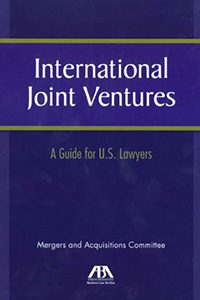
International Arbitral Awards and Their Enforcement: Lessons from Colombia’s Article 28 of Law 2540 (2025) in Comparative Perspective
By Daniel Peña Valenzuela, Partner Peña Mancero Abogado
Introduction
The enforcement of arbitral awards remains one of the most critical dimensions of arbitration, as it determines whether the adjudicatory process achieves practical effectiveness. While the New York Convention (1958) established a global framework for the recognition and enforcement of foreign arbitral awards, national legislations continue to innovate in regulating the execution of domestic and international awards. Colombia’s Law 2540 of 2025, which will enter into force on February 27, 2026, introduces significant reforms in this regard. Article 28 of the statute allows domestic arbitral awards to be executed before the same arbitral tribunal that rendered them, provided the request is made within ten business days of notification. This reform contrasts with the previous regime under Law 1563 of 2012, which required parties to seek enforcement before ordinary courts.
This paper examines the Colombian innovation, situates it within the broader international landscape, and compares it with practices in jurisdictions such as France, the United States, and Singapore. The analysis highlights both the potential efficiencies and the limitations of Colombia’s approach, particularly in relation to international arbitral awards and matters involving public entities.
The Colombian Reform: Article 28 of Law 2540 (2025)
-
Scope of Application: Domestic arbitral awards, conciliations, and settlements approved by arbitral tribunals may be executed before the same tribunal, subject to a strict ten-day deadline.
-
Procedural Mechanism:
-
In tribunals of three arbitrators, the president acts as executor, or another arbitrator in alphabetical order if the president declines.
-
In sole-arbitrator tribunals, the arbitrator may act as executor upon acceptance.
-
If no arbitrator accepts, the arbitration center designates an executor from its roster.
-
-
Limitations:
-
Execution is only possible if the arbitration agreement expressly provides for an arbitral enforcement procedure.
-
If the deadline lapses, a new arbitral tribunal must be convened to enforce the award.
-
Awards involving public entities or administrative functions are excluded from execution before the same tribunal.
-
This framework reflects a hybrid model: it strengthens arbitral autonomy while preserving judicial oversight in cases where deadlines expire or public interests are implicated.
Comparative Perspectives
-
France: French law requires arbitral awards to be declared enforceable by the juge de l’exequatur. The arbitral tribunal itself does not execute its award; judicial intervention is mandatory, ensuring uniformity and public control.
-
United States: Under the Federal Arbitration Act (FAA), arbitral awards must be confirmed by federal or state courts to become enforceable judgments. The arbitral tribunal has no role in execution, reflecting a strong reliance on judicial authority.
-
Singapore: The Singapore International Arbitration Act allows for swift enforcement of awards through the High Court, which issues enforcement orders. Efficiency is achieved through streamlined judicial procedures rather than arbitral self-execution.
-
Colombia’s Distinction: Unlike these jurisdictions, Colombia’s reform empowers arbitral tribunals to enforce their own awards, albeit within narrow procedural confines. This innovation seeks to reduce reliance on ordinary courts, but its strict deadlines and exclusions may limit practical effectiveness.
Conclusions
Colombia’s Article 28 of Law 2540 (2025) represents a bold experiment in arbitral self-enforcement. By allowing tribunals to execute their own awards, the reform enhances efficiency and reinforces party autonomy. However, its effectiveness depends on careful drafting of arbitration agreements and strict compliance with procedural deadlines.
Comparatively, most jurisdictions—France, the United States, Singapore—retain judicial involvement as a safeguard, prioritizing uniformity and public oversight over arbitral autonomy. Colombia’s model thus stands out as an innovative but cautious departure, balancing efficiency with limitations.
For international arbitration, the exclusion of awards involving public entities and the continued reliance on judicial enforcement for foreign awards align Colombia with global standards. Yet, the Colombian experiment may inspire debate on whether arbitral tribunals should play a more active role in enforcement, particularly in domestic contexts where efficiency gains are most needed.

Regulatory Convergence in the Digital Era: The Impact of the U.S. GENIUS Act on Stablecoins and Colombia’s Decree 1069 on Low-Value Payment Systems
By Daniel Peña Valenzuela, Partner Peña Mancero Abogados
1. Introduction
The rapid evolution of financial technologies has prompted governments worldwide to reassess their regulatory frameworks. This paper examines the intersection between the United States’ GENIUS Act—an ambitious legislative effort to regulate stablecoins—and Colombia’s Decree 1069 of October 2025, which modernizes the country’s low-value payment systems. By analyzing the implications of these two instruments, the paper explores how cross-border regulatory developments influence domestic financial ecosystems, particularly in emerging markets such as Colombia.
The digitization of financial services has catalyzed a paradigm shift in how payments are processed, assets are stored, and trust is established in economic transactions. In response, governments have begun to craft legislation that addresses the challenges and opportunities posed by digital currencies and decentralized payment infrastructures. The GENIUS Act in the United States and Colombia’s Decree 1069 represent two such efforts, each tailored to its respective jurisdiction yet sharing common regulatory aspirations. This paper investigates the potential synergies and tensions between these frameworks and their implications for Colombia’s financial sector.
2. The GENIUS Act: A New Regulatory Framework for Stablecoins
Enacted in July 2025, the GENIUS Act (Guaranteeing Essential National Infrastructure Using Stablecoins) constitutes the first comprehensive federal legislation in the United States aimed at regulating the issuance, circulation, and oversight of stablecoins. Key provisions of the Act include:
- Mandatory asset backing for stablecoin issuers, with reserves held in highly liquid instruments such as U.S. Treasury securities.
- Licensing requirements under the Federal Reserve and Securities and Exchange Commission (SEC), depending on the nature of the stablecoin.
- Obligations for interoperability with existing payment systems and digital wallets.
- Consumer protection mandates, including transparency in transaction fees, dispute resolution mechanisms, and data privacy safeguards.
The GENIUS Act positions stablecoins as legitimate instruments within the broader financial system, potentially paving the way for their integration into mainstream payment infrastructures. Its extraterritorial influence is particularly relevant for countries with strong financial ties to the U.S. or with significant remittance flows denominated in dollars.
3. Colombia’s Decree 1069: Reforming Low-Value Payment Systems
In October 2025, Colombia’s Ministry of Finance issued Decree 1069, a landmark regulation aimed at enhancing the efficiency, security, and accessibility of low-value payment systems. The decree mandates:
- Real-time interoperability among financial institutions with over 1.5 million active accounts.
- Minimum service availability thresholds of 99% per month for payment platforms.
- Standardized procedures for error correction and fraud mitigation.
- The establishment of the National Payments Council, a multi-stakeholder advisory body comprising representatives from the public and private sectors.
Decree 1069 reflects Colombia’s commitment to fostering financial inclusion and digital transformation. By prioritizing low-value transactions, the regulation targets the everyday financial needs of consumers and small businesses, which are often underserved by traditional banking models.
4. Points of Convergence: Regulatory Synergies and Strategic Alignment
Despite their distinct scopes and jurisdictions, the GENIUS Act and Decree 1069 exhibit notable areas of convergence. These include:
a. Interoperability as a Strategic Imperative
Both regulations underscore the importance of interoperability. The GENIUS Act requires stablecoins to integrate seamlessly with existing payment networks, while Decree 1069 enforces real-time interoperability among Colombian financial institutions. This shared emphasis facilitates cross-border transactions and lays the groundwork for stablecoin adoption in Colombia’s domestic payment landscape.
b. Consumer Protection and Trust
The GENIUS Act and Decree 1069 both prioritize consumer protection. The former mandates transparency and dispute resolution for stablecoin users, while the latter introduces protocols for error correction and fraud prevention in low-value payments. These provisions are essential for building trust in digital financial services, particularly among populations with limited financial literacy.
c. Institutional Coordination and Governance
The creation of the National Payments Council in Colombia and the dual oversight of stablecoins by U.S. regulatory agencies reflect a broader trend toward collaborative governance. Such institutional arrangements enable regulators to respond dynamically to technological innovations and market developments, while also fostering international dialogue on best practices.
5. Implications for Colombia’s Financial Ecosystem
The GENIUS Act’s enactment has several implications for Colombia, both direct and indirect:
a. Catalyzing Fintech Innovation
The regulatory clarity provided by the GENIUS Act may encourage U.S.-based stablecoin issuers to expand into emerging markets, including Colombia. This could stimulate competition and innovation within the Colombian fintech sector, particularly in areas such as remittances, peer-to-peer payments, and digital savings.
b. Risk of Disintermediation
The proliferation of stablecoins as payment instruments may challenge the traditional role of banks as intermediaries. Decree 1069 seeks to mitigate this risk by compelling banks to modernize their payment infrastructures and offer competitive digital services.
c. Regulatory Gaps and the Need for Harmonization
Colombia currently lacks a dedicated legal framework for stablecoins. The GENIUS Act may serve as a model for future legislation, helping Colombian regulators to define the legal status, operational requirements, and supervisory mechanisms for stablecoin issuers operating domestically.
6. Challenges and Opportunities
Challenges
- Regulatory Fragmentation: The absence of global standards for stablecoins may lead to jurisdictional conflicts and compliance burdens for cross-border operators.
- Technological Readiness: Colombian financial institutions must invest in infrastructure upgrades to meet the interoperability and availability standards set by Decree 1069.
- Public Awareness: The adoption of digital payment instruments requires robust consumer education initiatives to ensure informed usage and risk mitigation.
Opportunities
- Financial Inclusion: Stablecoins and low-value digital payments can extend financial services to underserved populations, particularly in rural and informal sectors.
- Cost Efficiency: Digital transactions reduce operational costs for businesses and consumers, enhancing economic productivity.
- Foreign Investment: A coherent and forward-looking regulatory environment may attract international fintech firms seeking expansion opportunities in Latin America.
7. Policy Recommendations
To capitalize on the regulatory momentum generated by the GENIUS Act and Decree 1069, Colombian policymakers should consider the following actions:
- Draft a comprehensive stablecoin law, incorporating lessons from the GENIUS Act and tailored to Colombia’s economic and technological context.
- Strengthen cybersecurity protocols for digital payment platforms, including mandatory audits and incident reporting mechanisms.
- Promote regional regulatory harmonization, particularly within the Pacific Alliance, to facilitate cross-border financial integration.
- Launch nationwide financial literacy campaigns, focusing on digital payments, data privacy, and fraud prevention.
Conclusion
The GENIUS Act and Decree 1069 represent pivotal steps in the global and local regulation of digital financial instruments. Their convergence illustrates a shared commitment to modernizing payment systems, enhancing consumer protection, and fostering innovation. For Colombia, the challenge lies in translating these regulatory developments into tangible improvements in financial inclusion, technological resilience, and economic competitiveness. By aligning domestic policy with international best practices, Colombia can position itself as a regional leader in the digital finance revolution.

Colombia: recent case law regarding commercial agency vs distribution contracts
by: Gabriela Mancero-Bucheli
In one of the most recent cases regarding commercial agency agreements in Colombia, the Superior Court of Bogotá clarified that economic risk does not, in itself, exclude the existence of a commercial agency. However, it is a determining factor when accompanied by operational independence, freedom to set prices, and absence of instructions from the contractor.
This article will discuss decision No. 11001 3103 045 2021 00461 01 by the Superior Court of Bogotá issued on May 12, 20251.1
Background of the case
MTBASE S.A.S. filed a lawsuit against SAP Colombia S.A.S., claiming that there was a commercial agency agreement between the two companies with an uninterrupted, continuous, and indefinite term from June 2, 1993, to December 31, 2019.
The plaintiff argued that the essential elements of an agency agreement were present, asserting that it had been entrusted with the promotion and market positioning of the product, in addition to carrying out technical functions associated with the commercialization of software licenses.
First Instance Judgment
The 45th Civil Court of the Bogotá Circuit ruled in favor of the plaintiff, finding that the primary purpose of the contracts was the distribution of software for resale, which could include support and complementary services offered directly by the plaintiff. The Court also noted that no contractual clause imposed agency duties on the plaintiff to act on behalf of the defendant for the purpose of positioning or growing the business in the software market, nor was there evidence that the plaintiff engaged in market development activities for the defendant’s benefit.
Appeal
The plaintiff appealed the first-instance judgment, arguing that, since the commercial agency agreement involved artistic works or creations (software), the legal transaction should have been registered with the National Copyright Office—evidence that the plaintiff never operated as a legal entity separate from the defendant. Furthermore, the technical support provided by the plaintiff to customers was delivered following training by the defendant, suggesting that “there was no distinction between the plaintiff and the defendant from the perspective of customers and the market”.
Superior Court of Bogota’s Analysis
The Superior Court of Bogotá analyzed the evidence and found that, contrary to what the appellant suggests, the case file shows that the contractual behavior of the parties, which lasted for 26 years, is consistent with the nature and content of a distribution contract.
The Court concluded that it was established that the plaintiff assumed the risks inherent in purchasing for resale, thereby undermining both the promotion of another’s business and the receipt of remuneration—elements intrinsic to a commercial agency contract. This was evidenced by sales invoices showing that customers acquired the software licenses directly from the plaintiff. Accordingly, the defendant did not pay commissions to the appellant; rather, its remuneration derived from the difference between the purchase price of the software licenses and the higher resale price charged to the consumers.
The decision stated:
““It is not without reason that case law has emphasized that, ‘although the essential elements of agency have been identified as the permanence or stability of the assignment, the independence of the agent, and the intermediary functions aimed at acquiring, retaining, expanding, or recovering customers for the principal, much of the doctrine agrees that it is the promotion of the conclusion of business—where the principal assumes the economic risk—that constitutes the typical content distinguishing the agency contract from other contractual arrangements, as the other elements may also be present in different types of agreements (…).’ Acting in the name and on behalf of a third party has been highlighted by this Chamber’s case law as the most decisive characteristic in determining whether the contract binding on the parties constitutes a commercial agency agreement. (CSJ, judgment of September 30, 2015, file 2004 00027)”.
The Court also emphasized that there is no written document or supporting evidence to substantiate the plaintiff’s claims. On the contrary, there is ample documentary evidence—including purchase invoices—supporting the first-instance judge’s conclusion that the plaintiff primarily acted by purchasing products from SAP COLOMBIA S.A.S. for resale to third parties.
Furthermore, as previously noted, the evidence shows that MTBASE S.A.S. remained silent for over two decades, thereby implicitly accepting the performance of services characteristic of a software license distribution agreement, rather than those of a commercial agency. This conduct runs contrary to fundamental legal principles, including the prohibition against acting in contradiction to one’s own prior conduct (venire contra factum proprium).
Conclusion
The Court concluded that no commercial agency agreement existed between the parties, as the plaintiff acted as an independent distributor, received no remuneration from the defendant since Its profit was derived not from a commission, but from the margin between the purchase and resale prices, and bore all business risks. Moreover, the plaintiff purchased licenses directly from the defendant and resold them under its own name, without any mandate of representation or direction from the defendant.
The decision clearly emphasized that economic risk is not incidental but an essential element, as its continuous presence precludes the existence of an agency relationship.
Gabriela Mancero-Bucheli, IDI Country Expert for agency and distribution in Colombia
Andrea Sánchez Gallardo

Arbitrating the future: Rethinking global dispute resolution in an age of strategic disruption –perspective 2035
Introduction
By 2035, international arbitration will be redefined not only by legal innovation but by its strategic relevance in a world marked by geopolitical fragmentation, technological acceleration, and ecological transition. Arbitration is no longer a peripheral mechanism for commercial disputes—it is becoming a central arena where states, corporations, and transnational actors negotiate power, legitimacy, and risk. As global governance becomes more contested and multipolar, arbitration must evolve to address complex disputes that reflect the strategic priorities of a rapidly transforming world.
Futures studies are not solely about forecasting what lies ahead—they critically examine the present to understand how current values, systems, and decisions shape possible futures. By analyzing today’s assumptions and power structures, the field reveals how the future is already being constructed in the now.
Its tools—like scenario planning and backcasting—depend on present trends and disruptions to imagine alternatives. This makes futures studies a strategic lens for rethinking today’s challenges, enabling more inclusive and anticipatory decisions grounded in current realities.
The evolution of international arbitration cannot be understood solely through the lens of legal development. While it shares structural similarities with other juridical institutions—such as codification, procedural refinement, and the emergence of specialized bodies—its trajectory has been uniquely shaped by the demands of cross-border commerce and the need for neutral dispute resolution mechanisms. Arbitration emerged as a pragmatic response to the limitations of national courts in handling transnational conflicts, especially in contexts where sovereignty, jurisdiction, and enforceability posed significant challenges.
Political and economic conditions have played a decisive role in shaping arbitration’s institutional architecture. From the rise of bilateral investment treaties (BITs) to the proliferation of free trade agreements, states have increasingly embraced arbitration as a tool for attracting foreign investment and mitigating geopolitical risk. The post–Cold War expansion of global markets, coupled with the liberalization of trade regimes, created fertile ground for arbitration to flourish. Institutions like ICSID and UNCITRAL gained prominence not just because of their legal sophistication, but because they offered predictability and legitimacy in politically sensitive environments.
Equally important has been the evolution of business practices and corporate strategies. As multinational enterprises expanded their operations across jurisdictions, the need for efficient, confidential, and enforceable dispute resolution mechanisms became paramount. Arbitration adapted to these needs by offering procedural flexibility, party autonomy, and enforceability under instruments like the New York Convention. Today, arbitration reflects a dynamic interplay between legal norms, commercial pragmatism, and geopolitical considerations—making it not just a legal institution, but a strategic instrument of global governance
Strategic pressures and emerging dispute frontiers
The idea of a “crisis” in arbitration often stems from concerns about legitimacy, transparency, cost, and consistency—especially in investor-state dispute settlement (ISDS). Critics argue that arbitration has become overly legalistic, expensive, and disconnected from the needs of affected communities or public interests. Some point to backlash from states revising or withdrawing from treaties, or to procedural fragmentation and unpredictability in arbitral outcomes.
Yet these very tensions may signal a renaissance rather than a decline. Arbitration is evolving—embracing reforms like greater transparency, diversity in arbitrator appointments, and procedural innovations. Crises, as some scholars argue, can catalyze transformation: pushing institutions to adapt, refine, and re-legitimize their roles. The rise of specialized tribunals, new codes of conduct, and broader stakeholder engagement suggests that arbitration is not collapsing but recalibrating—toward a more responsive and resilient future.
Multipolarity and the Rise of Strategic Arbitration
The erosion of unipolar legal consensus is giving way to a multipolar arbitration landscape. Regional arbitral centers are gaining prominence, not merely as alternatives to traditional institutions, but as strategic platforms aligned with national and regional interests. This shift reflects a broader recalibration of legal authority, where arbitration forums are selected not only for neutrality but for their capacity to reflect geopolitical alignments and regulatory preferences.
The international dispute resolution landscape has undergone a remarkable expansion, marked by the proliferation of specialized centers and forums across jurisdictions. Institutions such as the Singapore International Arbitration Centre (SIAC) https://siac.org.sg/ , the Mumbai Centre for International Arbitration (MCIA) https://mcia.org.in/ , and the International Arbitration and Mediation Centre in Hyderabad https://iamch.org.in/ have rapidly gained prominence, handling billions in cross-border disputes and reflecting a growing demand for regionally grounded, globally credible mechanisms. These centers offer not only arbitration but also mediation and hybrid models, responding to the need for flexible, efficient, and culturally attuned processes.
Simultaneously, the rise of international commercial courts (ICCs) in jurisdictions like Dubai, Abu Dhabi, Singapore, and post-Brexit Europe signals a strategic shift. These courts blend common law procedures with multilingual capabilities and international judicial expertise, positioning themselves as competitive alternatives to traditional arbitration. Their emergence reflects broader geopolitical and economic motivations—states seeking to project soft power, attract foreign investment, and establish themselves as legal hubs in the global economy.
This diversification of forums is not merely institutional—it’s conceptual. The growth of digital ADR platforms, AI-assisted resolution tools, and hybrid proceedings has redefined access and participation in global dispute resolution. As legal systems adapt to technological change and transnational complexity, the expansion of centers and forums represents not fragmentation but innovation. It signals a renaissance in dispute resolution—one that is more plural, responsive, and strategically aligned with the evolving contours of international commerce and governance.
In this context, arbitration becomes a tool of strategic positioning. States and corporations increasingly engage in forum selection and procedural design as part of broader geopolitical calculations. The rise of regional treaties and investment frameworks—often with embedded dispute resolution mechanisms—further reinforces the role of arbitration as a site of legal pluralism and strategic contestation.
Climate, Energy, and Resource Disputes
The global energy transition is generating a new wave of disputes centered on climate regulation, environmental obligations, and access to critical minerals. Arbitration will play a pivotal role in adjudicating conflicts over green infrastructure, carbon markets, and the reconfiguration of energy systems. These disputes are not merely commercial—they involve questions of sovereignty, ecological justice, and strategic resource control.
As states revise regulatory frameworks to meet climate targets, investors may challenge measures that affect profitability or asset valuation. Arbitration will need to reconcile investor protections with evolving environmental standards, balancing treaty obligations with planetary imperatives. The strategic importance of minerals such as lithium, cobalt, and rare earths will further intensify disputes over extraction rights, licensing regimes, and supply chain disruptions.
The protection of the environment and the global energy transition are increasingly intertwined as emerging matters of arbitrability, reshaping the contours of both commercial and investment arbitration. As states adopt climate policies—such as phasing out fossil fuels, regulating emissions, or incentivizing renewable energy—investors have begun challenging these measures under bilateral and multilateral treaties. Disputes over carbon pricing, feed-in tariffs, and retroactive changes to green energy incentives have already surfaced, revealing how environmental regulation and energy transition policies directly affect contractual and treaty-based expectations.
This convergence has also led to the rise of Environmental, Social, and Governance (ESG) clauses in contracts, which embed sustainability obligations into commercial relationships. These clauses are now being tested in arbitral forums, raising procedural and substantive questions about enforceability, jurisdiction, and public interest considerations. Arbitration is thus evolving to accommodate complex claims involving climate risk, regulatory change, and environmental harm—requiring tribunals to balance investor protections with sovereign rights to regulate for sustainability. Far from being peripheral, environmental and energy transition issues are becoming central to the future of arbitrability itself.
Technology, Dual-Use Innovation, and Strategic Sensitivities
Technological innovation—particularly in artificial intelligence, biotechnology, and dual-use systems—is reshaping the contours of transnational dispute resolution. Contracts involving sensitive technologies increasingly intersect with national security, data governance, and ethical regulation. Arbitration must adapt to handle disputes that involve proprietary algorithms, synthetic biology, and autonomous systems, often in contexts where confidentiality and strategic control are paramount.
These disputes require specialized procedural safeguards, technical expertise, and normative sensitivity. Arbitration will need to develop protocols for managing classified information, protecting intellectual property, and adjudicating claims that implicate both commercial interests and strategic imperatives. The convergence of technological and geopolitical risk will make arbitration a critical forum for navigating the boundaries of innovation and regulation.
By 2035, artificial intelligence will have become a structural component of international arbitration. AI systems will assist in case triage, jurisdictional analysis, and outcome prediction based on precedent and tribunal profiles. This integration will accelerate proceedings, reduce costs, and enhance argumentative coherence. However, it will also raise ethical challenges related to transparency, party autonomy, and algorithmic oversight. Arbitral institutions will have developed normative frameworks to ensure that technological intervention respects fundamental principles of due process.
Decentralized technologies such as blockchain will have transformed evidentiary management and award enforcement. Smart contracts will include self-executing arbitration clauses that trigger automated procedures upon breach. Digital evidence will be stored in verifiable custody chains, ensuring integrity and traceability. Arbitral awards will be encoded for instant recognition under international conventions, facilitating enforcement without jurisdictional friction. This infrastructure will consolidate arbitration as a reliable mechanism in environments marked by regulatory volatility.
Quantum computing and multilingual neural translation systems will have expanded the reach and sophistication of arbitration. Quantum algorithms will simulate complex normative conflicts and anticipate regulatory scenarios in investment, technology, and environmental disputes. Meanwhile, high-precision automatic translation will ensure full participation of linguistically diverse parties without sacrificing legal nuance. These technologies will redefine the role of arbitrators, who will not only interpret norms but mediate between divergent regulatory paradigms. Arbitration will become a strategic instrument for global cooperation and legal governance in times of disruption.
Institutional innovation and normative recalibration
Reconfiguring Legitimacy and Participation
The legitimacy of arbitration in the 2030 horizon will depend on its ability to incorporate broader stakeholder perspectives and respond to public interest concerns. Disputes involving environmental harm, indigenous rights, and social impact will require mechanisms that go beyond traditional party autonomy. Institutions must expand procedural inclusivity through tools such as third-party interventions, public hearings, and community representation.
This evolution reflects a strategic shift from arbitration as a private remedy to arbitration as a quasi-public forum. As disputes increasingly touch on global commons and collective goods, the legitimacy of arbitral outcomes will hinge on transparency, accountability, and normative coherence. Institutions must design procedures that accommodate plural interests while preserving procedural integrity and enforceability.
AI-Augmented Arbitration and Strategic Intelligence
Artificial intelligence will transform the practice of arbitration, not only through automation but through strategic intelligence. Predictive analytics, natural language processing, and decision-support systems will enhance case management, precedent analysis, and risk modeling. These tools will allow parties to simulate outcomes, optimize strategies, and anticipate arbitrator behavior.
However, the integration of AI raises strategic concerns about bias, opacity, and control. Institutions must establish governance frameworks that ensure algorithmic accountability, human oversight, and ethical compliance. Arbitration will become a hybrid space where human judgment and machine intelligence co-produce legal outcomes, requiring new standards of transparency and procedural fairness.
Treaty Reform and Sovereignty Reassertion
States are reasserting sovereignty through treaty reform, embedding clauses that protect regulatory autonomy in areas such as climate policy, public health, and financial stability. These reforms reflect a strategic recalibration of investment law, where the balance between investor protection and state discretion is being renegotiated.
Arbitrators will face complex interpretive challenges as they apply evolving treaty language to dynamic policy contexts. Disputes will increasingly involve questions of proportionality, necessity, and legitimacy, requiring arbitrators to engage with broader strategic rationales. The proliferation of overlapping treaties and regional frameworks will further complicate jurisdictional analysis and normative coherence.
Shaping the arbitrator of the future
Strategic Formation for a Complex Legal Landscape
The arbitrator of 2035 must be more than a legal technician—they must be a strategic interpreter of global complexity. As disputes increasingly involve overlapping jurisdictions, sensitive technologies, and contested norms, arbitrators will require a multidisciplinary formation that blends legal rigor with geopolitical awareness, technological literacy, and ethical discernment.
Gender has emerged as a pivotal issue in arbitration, not only as a matter of representation but as a structural concern shaping legitimacy, fairness, and institutional credibility. In 2023, leading arbitral institutions reported modest but meaningful increases in the appointment of women arbitrators—such as the ICC’s 29.7% rate of female confirmations and appointments. Yet disparities persist, especially when parties or co-arbitrators control nominations, where women are still selected significantly less often2. This imbalance has prompted initiatives like the Equal Representation in Arbitration Pledge and cross-institutional task forces to promote more inclusive appointment practices.
Beyond representation, gender is also influencing procedural norms and substantive expectations. Diverse tribunals are shown to enrich deliberation and enhance stakeholder trust, especially in disputes involving human rights, ESG obligations, or community impacts. Moreover, the arbitration community is increasingly recognizing that gender diversity cannot be reduced to binary metrics alone—it intersects with broader questions of identity, access, and equity. As arbitration evolves, gender is no longer a peripheral concern but a lens through which legitimacy, responsiveness, and global justice are being redefined.
Key dimensions of future arbitrator formation include
Geopolitical and Regulatory Fluency: Arbitrators must understand the strategic interests of states and corporations, the dynamics of regional legal systems, and the implications of treaty reform. Training should include modules on global governance, sovereignty frameworks, and the political economy of dispute resolution.
Technological Competence and Data Governance: With AI, biotech, and digital infrastructure at the heart of future disputes, arbitrators must be conversant in technical concepts such as algorithmic bias, cybersecurity, and intellectual property in emerging domains. This requires collaboration with engineers, data scientists, and ethicists in the design of training programs.
Environmental and Social Impact Analysis: As climate-related and ESG disputes proliferate, arbitrators must be equipped to evaluate environmental assessments, community impact reports, and sustainability metrics. This calls for integration of environmental law, social science, and stakeholder engagement methodologies into arbitrator education.
Procedural Innovation and Adaptive Design: The arbitrator of the future must be capable of tailoring procedures to complex, multi-party, and multi-norm disputes. This includes familiarity with hybrid mechanisms, digital hearings, and participatory tools such as amicus curiae and public consultations.
Ethical, Gender and Normative Reflexivity: Beyond neutrality, arbitrators must cultivate ethical reflexivity—an awareness of how legal decisions shape public goods, institutional legitimacy, and global norms. This includes recognizing how gender dynamics influence access to justice, procedural fairness, and the perception of arbitral authority. Training should incorporate case studies on gender bias, representational disparities, and the normative implications of inclusive adjudication in contested governance spaces.
Strategic Communication and Institutional Leadership: Arbitrators will increasingly serve as institutional actors, shaping the evolution of arbitral norms and practices. Gender-inclusive leadership is essential to this transformation. Arbitrators must be equipped to engage in strategic communication that reflects diverse stakeholder perspectives, promote equitable representation in appointments, and contribute to institutional reforms that embed gender parity and intersectional awareness into the arbitral ecosystem.
To achieve this, arbitral institutions, universities, and professional networks must collaborate in designing advanced curricula, simulation-based learning environments, and interdisciplinary certification programs. The formation of arbitrators must evolve from static legal instruction to dynamic strategic education, preparing them to navigate the volatile, plural, and high-stakes disputes of the coming decade.
Conclusion: Towards strategic arbitration in a complex world
By 2035, international arbitration will not only serve as a strategic instrument of global governance but also reflect the evolving demands of inclusivity, technological transformation, and regional pluralism. Gender diversity will be central to its legitimacy, moving beyond symbolic representation toward structural equity in appointments, leadership, and procedural design. Initiatives like the Equal Representation in Arbitration Pledge have laid groundwork, but deeper reforms are needed to address persistent disparities in party-nominated arbitrators and to ensure intersectional inclusion across gender, ethnicity, and professional background. A truly representative arbitral ecosystem will enhance trust, enrich deliberation, and align with broader global justice imperatives.
Technological transformation will redefine both the substance and procedure of arbitration. AI-assisted case management, digital evidence protocols, and virtual hearings will become standard, demanding new competencies in data analytics and ethics, and algorithmic accountability. Arbitration will also increasingly engage with disputes arising from emerging technologies—such as blockchain, quantum computing, and platform governance—requiring tribunals to interpret novel legal questions with interdisciplinary insight. Institutions must invest in tech-literate infrastructure and adaptive procedural rules to remain credible in this rapidly shifting terrain.

Contracts for Difference (CFDs): an opportunity for the energy sector
By Gabriela Mancero for the Minas Petróleos & Energía Bar Association
In the Colombian context, Contracts for Difference (CFDs) can be a key tool for encouraging investment in renewable energy and stabilizing electricity prices.
Regulation of CFDs in Colombia
In financial terms, a Contract for Difference (CFD) is a financial derivatives contract. It can be entered into on a number of different products. The largest markets for CFD financial products are currency and interest rate swaps. In derivative contracts, the actual asset, in financial terms, the underlying asset, is not traded. The transaction is purely financial. In CFD contracts, an agreement is established between two parties to exchange payments based on the price of an underlying asset.
The Banco de la República de Colombia is the regulatory authority for foreign exchange matters. As such, it is responsible for supervising the Colombian cross-border derivatives market and the local derivatives market related to foreign exchange transactions. CFDs are generally defined as derivative products that allow investors to take a position on changes in the value of an underlying asset.
In Colombia, CFDs are atypical contracts, not regulated by law. Despite this nature, the Banco de la República has classified CFDs by interpretation as financial derivatives. Investments can be made with both local and foreign agents authorized as so-called authorized foreign agents or online dealers or market makers, as permitted by local regulations.
Foreign agents authorized to carry out derivative transactions with Colombian residents are those non-domiciled entities that have carried out such transactions in the immediately preceding year for a nominal value exceeding USD 1,000,000,000. Despite this requirement, Colombian residents, and not a government entity in Colombia, are responsible for properly assessing compliance with this requirement by foreign agents.
In derivative contracts, the actual asset, in financial terms: the underlying asset, is not traded. The transaction is purely financial.
In Colombia, CFDs can be used to provide stable long-term prices for renewable energy producers, protecting them from the volatility of the electricity market. These contracts allow producers to sell their energy at an agreed fixed price, while the State or a regulatory entity assumes the risk of market fluctuations. It is the movements in the price of the underlying asset that trigger payments between the parties to the contract without the actual asset changing hands, i.e., without physical delivery or transfer of ownership of the electricity. These transactions are carried out on margin, which involves the periodic delivery of money to the agent so that they can continue trading. CFDs can also be used to protect consumers from high electricity prices.
Here are some international examples of the successful use of CFDs in renewable energy:
- The United Kingdom has been a pioneer in the implementation of CFDs for renewable energy. In the latest round of auctions in 2017, two offshore wind projects were awarded CFD contracts at £57.50/MWh (€64.10/MWh), representing a 50% reduction in the costs of contracts awarded 30 months earlier.
- The European Commission has proposed a reform of the electricity market that includes the implementation of bidirectional CFDs for new renewable electricity projects and nuclear power plants. These contracts allow the state to compensate the producer if market prices fall below an agreed threshold and to capture the excess revenue if prices exceed that threshold.
- In Spain, CFDs are used as part of renewable energy auctions to ensure stable long-term prices for renewable energy producers. These contracts are awarded through competitive auctions, where producers bid the lowest price at which they are willing to sell their energy. These examples show how CFDs are increasingly seen as the preferred method for incentivizing investment in low-carbon projects and new technologies, leading to a two-way CFD model being the recommended market mechanism for contracts to be signed in the Colombia Offshore Wind Round led by the National Hydrocarbons Agency (ANH).
When designing CFDs, regulators typically pursue two broad objectives: first, to incentivize investment in renewables in line with the policy objectives of their development plans, and second, to integrate renewables into energy markets with as little distortion as possible. At the same time, the development of the energy system must follow the principles of security of supply and cost minimization. Contracts for Difference can play a crucial role in Colombia’s energy transition by providing price stability and encouraging investment in renewable energy. With an appropriate legal framework and transparent procedures, CFDs can help Colombia achieve its sustainability and energy security goals.

Crypto-asset regulation in colombia: recent trends
The regulation on crypto-assets is a relevant index to determine the digital business climate in a country. Like any emerging technology, its early adoption in a market and adequate regulation can be an important step in the digital transformation processes in companies, the government and support digital entrepreneurship. The efficiency and data decentralization of blockchain and cryptocurrencies generate disruptive effects in certain markets and may also create concern about eventual illegal activities deriving from the technology’s relative anonymity.
In Colombia, several public entities have issued regulation and opinions on crypto-assets. This is precisely the first trend that we want to highlight. In Colombia there is a diversity of public entities that have touched upon different legal issues related to crypto-assets, namely: financial, exchange, tax, commercial, compliance and contractual issues, among others.
The following is a list with the main existing regulation and opinions:
(a) Financial Superintendence, Chapter XVIII External Circular Letter No. 041 of 2015;
(b) Decree 2555 of 2010.
(c) Regulatory Decree 1068 of 2015 (article 2.17.2.4.1.1);
(d) External Resolution No. 8 of May 5, 2000;
(e) External Resolution No. 1 of May 25, 2018;
(f) External Circular Letter No. DODM-144 of September 14, 2018;
(g) External Circular Letter No. DECIP-83 of August 27, 2021;
(h) Central Bank Opinion No. JDS-03409 of February 16, 2011;
(i) Central Bank Opinion No. JDS-19704 of September 12, 2016;
(j) Central Bank Opinion No. C19-110904 of June 21, 2019;
(k) Central Bank Opinion No. C21-70969 Q21-4417 of December 9, 2021;
(l) Financial Superintendence Opinion No. 2020079520-001 of May 15, 2020.
This is an effect of the transversal use of crypto-assets in different economic sectors and for different activities. However, if greater legal certainty is sought, the government could adopt a public policy document defining the vision and direction of the relationship between the public and the private sectors in relation to these digital assets.
In general, the Colombian authorities agree on the following characteristics related to crypto-assets as a basis for their regulation in each legal field and to determine the risks of the crypto title-holders who trade these intangible assets:
- Crypto-assets are not currency, as the only monetary and account unit that constitutes a legal tender and means of payment with unlimited release power, is the Colombian peso issued by the Central Bank of Colombia (bills and coins);
- Crypto-assets are not money for legal purposes;
- Crypto-assets are not a currency, since it has not been recognized as a currency by any international monetary authority nor is it supported by central banks;
- Crypto-assets are not cash or cash equivalent;
- There is no obligation to receive crypto-assets as a means of payment;
- Crypto-assets are not financial assets or investment property in accounting terms;
- Crypto-assets are not securities, so their mention as such or assimilation should be avoided.
The above characteristics have been consistently upheld by different Colombian government documents and denote an interpretation of intangibles that is always based on traditional notions of assets.
Crypto-assets have been defined in Colombia as intangible assets and therefore are likely to be contributed to the capital of corporations, provided that (i) they comply with accounting laws and secondary rules and legal regulations; and (ii) that the partners approve their appraisal. Based on these arguments, the Colombian government expressly affirmed a change in its doctrine, confirming that shareholders can contribute crypto-assets in the form of a contribution in kind. The foregoing, subject to a series of requirements and recommendations, opens the possibility of incorporating crypto-assets as part of the incorporation of companies in Colombia.
Colombian residents who have crypto-assets as part of their assets must declare them in their annual income tax returns. The value for which they must be declared will be for their equity value, either as an intangible asset (investment) or inventory.
On the accounting side, it is recommended that a separate unit of account be created for the recognition, measurement and disclosure of transactions and other events or occurrences that are related to cryptocurrencies, which could well be called “crypto-assets” or “virtual assets”.
If the crypto-assets are traded in a foreign currency, the value of the assets in foreign currency is estimated in national currency at the time of their initial recognition at the official exchange rate, less credits or payments measured at the same official exchange rate of the initial recognition.
Colombian residents who have equipment, resources and work that are integrated into the crypto mining activity, allowing them to obtain virtual currencies in exchange for the services provided in the network and/or by way of commissions, receive taxable income in Colombia, by virtue of the aforementioned criteria. Likewise, it is clear that resident individuals and national companies are taxed not only on their income from a national source but also from a foreign source income and on their assets owned in the country and abroad. From the equity point of view, as long as these coins correspond to intangible assets, capable of being valued, they form part of the equity and can lead to the obtaining of (presumptive) income.
For instance, the purchase and sale of real estate with payment through crypto-assets is an exchange of an asset whose payment will be made through the delivery of an intangible asset. The tax obligations associated with income tax will be those derived from the execution of the exchange contract. Carrying out the exchange will affect the assets of the party delivering the crypto-asset; the payment of the price will generate an equity decrease due to its disposal. On the other hand, depending on the real estate valuation, seller may increase its assets by carrying out the respective exchange, or equate the equity value of the crypto-asset delivered. Consequently, the party delivering the crypto-asset must determine the equity value of said asset, and analyze whether, on the occasion of the exchange, an income for the difference between the tax cost of the asset and the value of its disposal was obtained. The payment of the property through crypto-assets may represent an increase in equity in the head of the property seller if the equity value of the crypto-asset is higher than that of the real estate. The capital increase must be reported in that party’s accounting and income tax return. To the same extent, the real estate seller must determine the equity value of said property, and verify if, on the occasion of the exchange, an income for the difference between the fiscal cost of the real estate and the value of the sale was obtained. The parties must comply with the provisions of the Colombian Tax Statute for the purpose of determining the minimum prices for the sale of the goods subject to the exchange.
As in other jurisdictions, Colombia is no exception for crypto-assets being used in criminal activities. Cases of criminal use, fraud and the use of crypto-assets for payments related to computer attacks and ransomware as well as for payments related to extortion are becoming more frequent. Crypto-assets can also be used as instruments for money laundering, terrorist financing and other criminal activities, in view of which the administrators of the companies that participate in the crypto-asset market must deploy: i) the maximum due diligence in the knowledge of the ends of the operation (including associates, employees, clients, contractors and suppliers, and their final beneficiaries), in regards to the prevention of ML/TF; and, ii) the diligence that a businessman in good faith would take into account to prevent the phenomenon of asset laundering or money from the public being illegally collected or any other damage to the public or private interest being generated through such company. Those who carry out operations with crypto-assets decide in a responsible, conscious and autonomous manner, at their own expense and risk, to assume the possible losses that could be derived from this type of transaction.
The difficulty of clearly defining crypto-assets has been used by criminals to deceive investors and to carry out illegal collection of funds and Ponzi schemes with business models and strategies that can only be carried out by financial entities authorized by the Colombian government.
The growth of the crypto-asset market, in particular cryptocurrencies, depends on the ability of crypto-assets being used in many activities. So, while there is need for a clear regulatory framework that allows measuring risks, it is also important that absolute prohibitions or regulatory disincentives disappear.
In the past two years, a bill that regulates the relationship between wallets, exchanges and platforms in relation to crypto assets has advanced for approval in the Colombian Congress. In the first place, this proposed legislation proposes a series of definitions, among others, the following:
- Wallets: These are the virtual media in which the public and private encryption keys are stored.
- Crypto-assets Exchange Services: these are the following services: (i) Administration of crypto-assets exchange platforms. (ii). Provision of custody and/or storage services for crypto assets. (iii). Exchange or transfer between crypto-assets and fiat currency, or between one or more crypto-assets. (iv). The supplementary or analogous services related to sections i, ii and iii above.
- Crypto Asset Exchange Platform (PIC): These are computer applications or interfaces, internet pages or any other means of electronic or digital communication through which the Crypto-asset Exchange Services are provided.
- Crypto-asset Exchange Service Provider: It is a national business entity or a branch of a foreign company, in charge of operating, managing and guaranteeing the operation of the PIC, registering with the Chamber of Commerce of its main domicile and responsible for compliance with the obligations.
- Unique Registry of Crypto-asset Exchange Platforms (RUPIC): It is an electronic public registry managed by the Chambers of Commerce whose objective is to allow anyone to access the information published in said registry, and to verify that the Service Providers of Crypto-assets Exchange as holders are duly registered.
- PIC Operations Manual: Document that contains the requirements and internal parameters of the PIC for the provision of Crypto-asset Exchange Services.
As a principle of interpretation of the crypto-asset market, it is established in the draft bill that crypto-assets are negotiable directly by their owners. The operation of the different crypto assets, their rules belong to the private sphere of the users, who, based on the principles of free market and free competition, must seek to be informed about the risks inherent in trading with assets of any kind.
The Crypto-asset Exchange Service Providers, Colombian or foreigners, must comply with the following requirements:
- Be incorporated as a commercial company domiciled in Colombia or as a branch of a foreign company, and be duly registered in the Colombian mercantile registry.
- Include as the exclusive corporate purpose the performance of activities classified as Crypto-asset Exchange Services.
- Establish and maintain a computer security program that ensures the availability and functionality of its computer systems, protecting said systems and all information stored in them, from unauthorized access, use and manipulation, the foregoing in accordance with the instructions that for this purpose imparted by the Ministry of Information Technology and Communications.
- Adopt control measures aimed at detecting and preventing money laundering and terrorist financing.
- Register in the Special Register for Crypto-assets Service Providers before the Chamber of Commerce of the entity’s main address, indicating the web domain and the information determined by the Ministry of Information and Communication Technologies.
- Report to the Financial Information and Analysis Unit the information that is required in compliance with money laundering regulations.
- Comply with the Colombian personal data protection regulations.
- Implement KYC and customer Due Diligence measures.
- Have an Operations Manual for the operation of the PICs that it manages, approved by the Ministry of Information Technologies and Communications.
According to the proposed bill, the Crypto-assets Exchange Service Providers are prohibited from:
- Offering or paying consumers interests or any other return or monetary benefit for the balance that they accumulate over time or maintain or for any operation directly or indirectly related to the exchange that they carry out with crypto-assets.
- Transferring under any title, lend or encumber crypto-assets or any other resource owned by consumers, stored by the Crypto-asset Exchange Service Provider, without the express authorization of the consumer.
- Developing any kinds of commercial network or multi-level marketing activity with crypto-assets, as well as their financial intermediation. Likewise, the administrators or service providers of crypto-asset exchange platforms may not allow the commercial distribution of crypto-assets to be carried out on their platforms through network or multi-level marketing activities or similar.
- Refraining from carrying out any conduct that leads to the massive and regular collection of funds from the public that additionally implies the absence of consideration in present or future goods or services that justify it or, even if such consideration exists, does not have a reasonable financial explanation.
The model proposed in this draft bill does not comprehensively regulate the different legal aspects of crypto assets. The relationship between some of the agents in the ecosystem can set aside a holistic vision that is necessary to obtain the benefits of intelligent regulation. It is not clear if the Financial Regulation Unit of the Colombian government agrees with the content of this bill.
To sum up, in Colombia there is a regulatory trend that has been transforming from a prohibition on the use of crypto-assets towards a vision more associated with the risks inherent in the market for these digital assets. The regulation remains disperse since different Colombian public entities with market supervision and surveillance functions have issued rules and opinions related to accounting, tax, contractual, exchange and financial issues, among others. An effective coordination between the different public entities that regulate crypto-assets is necessary to achieve legal certainty and stimulate the use of these digital assets as well as to generate a business environment that allows attracting investment. It is necessary to wait and see if the draft bill that is in progress becomes law so that wallets, exchanges and crypto-asset offering platforms in particular, are regulated more specifically in terms of their registration and duties as well as their liability towards consumers and users of crypto-assets.

New regulation on electronic payroll In Colombia
By: María del Pilar Duplat M. – Peña Mancero Abogados
The Colombian tax authority (DIAN by its Spanish acronym) issued resolution 13 of February 11, 2021 regulating the implementation of the electronic payroll system (the “Electronic Payroll Resolution” or the “Resolution”).
Who must submit the electronic payroll to DIAN?
Income taxpayers that are employers or that make payments due to legal or regulatory relationships or that make pension payments, and require to support said costs and deductions in their tax returns.
On a monthly basis, the aforementioned subjects must submit to DIAN a payroll supporting document for its approval or correction.
What is the payroll supporting document?
The electronic payroll supporting document is the document that shows all labor-related payments made by the employer. This document must contain the following information for its creation, transmission and approval by DIAN:
- Expressly indicate that it is an electronic payroll supporting document.
- Employer complete name of the individual or entity, ID Number or tax id number.
- Complete name(s) and ID of the person who receives the payment.
- The Unique Code Number of the Supporting Document of the electronic Payroll (CUNE by its initials in Spanish).
- Internal consecutive number granted by the subject obliged to submit the electronic payroll.
- Contents and amounts of the accrued value of payroll pursuant to the Technical Appendix to the Electronic Payroll Resolution.
- Contents and amounts of the deducted sums from the payroll pursuant to the Technical Appendix to the Electronic Payroll Resolution.
- Total amount resulting from the difference between the total accrued payroll payments minus the total deducted sums from the payroll payments.
- The contents of the Technical Appendix as provided in article 20 of the Electronic Payroll Resolution, regarding the information and contents contained herein.
- The form of payment of the payroll per the Technical Appendix to the Payroll Resolution.
- Date and time of creation of the document.
- Digital signature of the Subject who pays the Payroll in accordance with the DIAN’s requirements of authenticity and integrity of the signature.
- Complete name and ID or tax id number of the software supplier and identification of the software.
When do I have to submit the electronic payroll to DIAN?
The electronic payroll supporting document must be issued and sent to DIAN on a monthly basis, ten (10) days after its creation or issuance.
As of when must the electronic payroll be implemented?
- Implementation Calendar for subjects per the number of employees
| Group | Beginning date of the enabling of the electronic payroll data processing system | Maximum date to start the issuance and transmission of the electronic payroll payment support document and the electronic payroll payment support document adjustment notes. | Range in relation to the number of employees
|
|
| From | Until | |||
| 1 | May 31st, 2021 | July 01, 2021 | More than 251 | |
| 2 | August 01, 2021 | 101 | 250 | |
| 3 | September 01, 2021 | 11 | 100 | |
| 4 | October 01, 2021 | 4 | 10 | |
| 5 | November 01, 2021 | 2 | 3 | |
| 6 | December 01, 2021 | 1 | ||
- Permanent Implementation Calendar
The obliged subjects will have a term of two (2) months from the date in which they make the payroll payments to carry out the enabling of the service and proceeding to transmit the supporting documents of the electronic payroll and its adjustment notes.
The remaining subjects must issue the supporting payroll document and their adjustment notes to request the costs and deductions of the income tax and the VAT deductible taxes, when applicable.
- Implementation calendar for subjects not obliged to issue electronic sales invoices
Subjects not obliged to issue electronic sales invoices must start the enabling of the electronic data payroll service on March 31, 2022; and they must issue and send the supporting document of the payment of the electronic payroll and their adjustment notes, no later than May 31, 2022.
How do I issue the electronic payroll documents?
The enabling procedure is the one that is developed within the electronic invoicing system which must have the function to issue the electronic payroll supporting document pursuant to DIAN’s requirements.
The enabling procedure must be carried out before the date when the subjects must start with the implementation and the term when they must submit the monthly electronic payroll.
If you have further inquiries regarding this new regulation, please do not hesitate to contact us at: info@pmabogados.co

Why a due diligence process may become a nightmare in Colombia?
Strong institutions with reliable databases available to the public are key when carrying out a due diligence process. In most cases, information provided by the target is insufficient and not always accurate. This means that attorneys must be creative in order to look for the right information in the right places.
Here are some examples of what can go wrong if a due diligence process is not properly handled:
- Real estate is tricky in Colombia, especially when you acquire assets or companies with rural real estate. Many attorneys focus on making sure that the “owner” of the land or property is duly recorded with the Real Estate Registry without realizing there is so much more! For instance: (i) determining whether the area has oil & gas or mining licenses that would create compulsory easements or eventually hinder its use; (ii) determining whether there are environmental restrictions such as being part of a national park, a protected wetland or a forest; (iii) verifying whether the land was formerly owned by communities or people who had to give it up because of armed groups’ pressure and are now subject to restitution proceedings; (iv) confirming that the land is not in fact a barren land that someone occupied as, regardless of time lapsed, it will continue to be State-owned and not subject to transfer.
- The Superintendence of Corporations recently issued a new regulation introducing stricter rules for anti-money laundering and terrorism financing. We cannot hide that Colombia has individuals and companies involved in such activities that do business in creative manners so as to disguise the true origin of their funds. A proper investigation during due diligence should include examining who the beneficial owners of the target are and searching not only the standard international OFAC and similar lists but also carrying out a full search of local media publications and other more informal sources of information.
- Latin American countries keep facing more and more corruption scandals. Colombia is not the exception. Doing business with relatives, partners and close friends of politically exposed parties can be risky. A proper due diligence should involve requesting full disclosure not only from all sellers but also from the target’s main stakeholders. Regulatory standards can be found in the Colombian anti-corruption statute.
- Unlike most Latin American countries, Colombia’s foreign exchange regulation imposes strict reporting obligations concerning foreign-currency-related operations such as foreign investment, receiving or granting loans from/to foreign residents, granting securities abroad, imports and exports. Non-compliance with such obligations may derive in huge fines to be imposed either by the Superintendence of Corporations or by the tax authority (DIAN). To avoid such liability, due diligence should include reviewing all the above foreign exchange transactions including: timely filing of reports to the Central Bank; correct reporting of each transaction; requesting an up-to-date report from the Central Bank to obtain information on all reported items.
- When searching for the history of land, corporations, litigation, property and any other asset that is subject to public record, one must be careful in Colombia. Government agencies are not always up-to-date and technology tends to be basic when it comes to search engines. There are entities and courts who simply do not provide such service to the public so not being able to complete an independent verification of the target’s records is common.
Being able to distinguish between what a “deal breaker” is and what not requires a thorough understanding of the risks involved and their eventual effects. For example, if a mining license does exist on the target’s land, a deal breaker would be not being able to use the land at all because of a compulsory easement that would prevent you from carrying out any activity whatsoever and that land being essential and of great value to the business you are acquiring. Otherwise, you may still negotiate such liability being properly disclosed in the “Disclosure Schedule” of the purchase agreement and establishing an escrow or taking any other measure to tackle loss if occurring. The same thing cannot be said when there are findings concerning money laundering or corruption charges. The risk involved in such situations would need to be measured in a very conservative manner as effects would not only involve economic consequences but eventual imprisonment.
Peña Mancero Abogados is publishing a series of high-level articles on M&A activity in Colombia. This article is for information purposes only and does not constitute legal advice. If you require further information, please contact Gabriela Mancero (info@pmabogados.co)
CAUSE FOR DISOLUTION OF COMPANIES DUE TO NON-COMPLIANCE WITH THE HYPOTHESIS OF CONTINUING BUSINESS
By: Daniel Salazar López
The current political, social and economic crisis as a result of COVID-19 outbreak, led many companies and branches of foreign companies to enter into a cause for dissolution for losses or accumulated losses, some of them overcame the cause for dissolution while others had to be liquidated.
Until recently, in Colombia a company entered into a cause for dissolution when it had losses or accumulated losses which resulted in a decrease in equity below 50% of its subscribed capital. If this cause for dissolution was not solved within a 2 year period, the company had to be liquidated. Nevertheless, Law 2069 of 2021 (Entrepreneurship Law) eliminated this cause for dissolution and liquidation of companies in Colombia, and introduced a new cause for dissolution, the non-compliance with the hypothesis of continuing business. This is a step forward in corporate matters, since the cause of losses caused confusion, firstly taking into account that companies at the beginning of their economic activity generated high costs that prevented them from having profits at the end of the fiscal year, and therefore entering into grounds for dissolution; previously, at the closing of each fiscal year, the cause for dissolution was warned of and could be enervated within the established term, now it is imperative that the administrators of a company intervene more thoroughly on the hypothesis of continuing business.
The hypothesis of continuing business provides that provides that at the end of the fiscal year, a company must evaluate its financial statements to determine whether it has the capacity to continue operating. Therefore, when the highest corporate body analyses and evaluates the financial statements prepared under the hypothesis of continuing business, and it is observed that there is a detriment to the company’s assets and that this casts doubt on the continuity of the company’s continuing business[1], the company will be subject to dissolution.
If your company has an International Financial Reporting Standard (IFRS) accounting framework, the management under IFRS will assess the entity’s ability to continue with its businesses, which underlines the importance of preparing financial statements for the fiscal year 2020 in the current business environment. On the other hand, the companies that were subject to dissolution due to losses before the entry into force of Law 2069, such cause was suspended by virtue of Decrees 560 and 772 of 2020, while the companies are recovering in the midst of the crisis generated by COVID-19. It is worth mentioning that such suspension is extended to Law 2069 until the end of the term of such decrees, i.e., until April 2022.
In view of the foregoing, when the administrator notices in the financial statements of the fiscal year that the hypothesis of continuing business is not complied with, the administrator must summon the highest corporate body to inform in a documented manner such situation, so that the highest corporate organ of the company declares that the company has entered into dissolution grounds and therefore measures must be taken to continue with the business or to liquidate the company. It is important to highlight that when the company enters into a cause for dissolution, the administrators must abstain from carrying out new operations different from the ordinary course of business of the company. In case of non-compliance with the duty to inform the respective highest body by the administrator, the administrator shall be jointly and severally liable for the damages caused to the members of the Company or third parties. In assessing whether continuing business situation is appropriate, the management shall consider all available facts about the future, which shall cover at least, but not be limited to, the next twelve (12) months from the reporting date.
The following situations are considered as non-compliance with the continuing business hypothesis:
- Liquidity risk
- Legal claims of significant contingencies.
- Low quality condition of the company’s products or services.
- Termination of contracts with significant customer and suppliers.
- High consecutive borrowing to invest in long-term business.
- Financial losses due to failure to meet contractual payment obligations.
- Labor strikes that have a significant impact on the company´s result.
- If there are delay in the payment of liabilities with banks, payroll or dividends.
Thus, if the company has a history of profitable operations and it´s positive cash flow projections indicate appropriate access to financial resources, it can be concluded that the use of the hypothesis of continuing business is appropriate. Now, it is imperative to prepare the financial statements for the fiscal year, including the trial or periodic financial statements, and the concept issued by the accountant will become more relevant since the highest corporate body will determine the viability in the short and medium term (12 months), avoiding deterioration in the common pledge of the creditors and in the equity of the associates. If, on the contrary, there is an uncertainty in the operations of the ordinary course of business of the company, and it isn´t possible to cover it within the following twelve months, the cause of non-compliance with the hypothesis of continuing business is configured and the company must proceed with its dissolution and liquidation. The proposal of this new cause seeks to protect the contingencies derived from the state of emergency due to COVID-19.
[1] Consejo Técnico de la Contaduría Pública Radicado 2018-095, del 2 de febrero de 2018

Data Protection & Privacy
 Autor: Daniel Peña Valenzuela
Autor: Daniel Peña Valenzuela
Editorial: European Lawyer
Categoría: Data Protection, European & EU Law
Año de Edición: 08 Nov 2016
Formato: Libro Impreso
Número de páginas: 1124
ISBN: 9780414057821
The number of jurisdictions with laws on data protection and privacy is still on the rise and the interest in the area of data protection and privacy has never been greater. The book aims to create a single starting point of reference for businesses, data protection officers, advisers and legal professionals involved in data protection and privacy. This third edition of Data Protection & Privacy – Jurisdictional Comparisons serves as an indispensable reference guide on the data protection and privacy laws in over 40 countries from six continents.
Written by expert local practitioners, with deep experience in the field of data protection and privacy, every chapter contains an overview of the key elements and principles of the data protection and privacy law framework in the relevant jurisdiction as well as the latest developments and trends. Because each chapter follows the same Q&A structure, readers can conduct quick comparisons between the various legal regimes.
Contents
1. Legislation
2. Data protection authority
3. Legal basis for data processing
4. Special rules
5. Data quality requirements
6. Outsourcing and due diligence
7. International data transfers
8. Information obligations
9. Rights of individuals
10. Security of data processing
11. Data protection impact assessments, audits and seals
12. Registration obligations
13. Data protection officer
14. Enforcement and sanctions
15. Remedies and liability
Jurisdictional coverage
1. Argentina – Marval, O’farrell & Mairal
2. Australia – Gilbert + Tobin
3. Austria – Preslmayr Rechtsanwälte Og
4. Belgium – Covington & Burling Llp
5. Brazil – Felsberg Advogados
6. Bulgaria – Djingov, Gouginski, Kyutchukov & Velichkov
7. Canada – Osler
8. Chile – Palma & Palma Abogados
9. Colombia – Peña Mancero Abogados
10. Costa Rica – Thompson Abogados
11. Czech Republic – Havel, Holásek & Partners S.R.O.
12. Denmark – Beck – Bruun
13. EU – Covington & Burling Llp
14. EU Institutions & Bodies – European Commission
15. Germany – Covington & Burling Llp
16. Hong Kong – Deacons
17. Hungary – Oppenheim Law Firm
18. India – Vaish Associates Advocates
19. Ireland – Mason Hayes Curran
20. Israel – Vigal Arnon & Co
21. Italy – NCTM
22. Japan – Atsumi & Sakai
23. Lithuania – Valiunas Ellex
24. Luxembourg – Arendt & Medernach SA
25. Malaysia – Christopher Lee Ong
26. Malta – GVTH Advocates
27. Mexico – Laurant Abogados
28. Morocco – Hajji & Associes
29. Netherlands – Vondst Advocaten
30. Poland – Soltysinski Kawecki & Szlezak
31. Portugal – Coelho Ribeiro E Associados
32. Romania – Nestor Nestor Diculescu Kingston Petersen
33. Singapore – Wongpartnership Llp
34. Slovakia – Havel, Holásek & Partners S.R.O
35. Slovenia – Rojs, Peljhan, Prelesnik & Partnerji
36. South Africa –Adams & Adams
37. South Africa – Lee & Ko
38. Spain – Garrigues
39. Sweden – Mannheimer Swartling Advokatbyrå Ab
40. Switzerland – Lenz & Staehelin
41. Taiwan – Lee And Li, Attorneys-At-Law
42. Turkey – Elig
43. Uae – Al Tamimi & Company
44. Uk – Covington & Burling Llp
45. Usa – Covington & Burling Llp

International Joint Ventures (2013)
GABRIELA MANCERO,
JOINT VENTURE IN COLOMBIA, PAGS 91-102,
OBRA: INTERNATIONAL JOINT VENTURES, A GUIDE OR U.S. LAWYERS (INTERNATIONAL JOINT VENTURES/MERGERS AND ACQUISITIONS COMMITTEE)
CHICAGO, AMERICAN BAR ASSOCIATION,
AÑO: 2013.
 This publication is part of a series of works published by the international Mergers & Acquisitions Subcommittee to assist business lawyers in advising clients in international transactions. The focus of this publication is on bilateral joint ventures between US and overseas coventurers.
This publication is part of a series of works published by the international Mergers & Acquisitions Subcommittee to assist business lawyers in advising clients in international transactions. The focus of this publication is on bilateral joint ventures between US and overseas coventurers.
In providing a framework for considering issues particular to a jurisdiction’s legal system and culture, the Task Force has crafted a flexible but relatively uniform method of how to think about issues particular to international joint venture. The result is a reference work that is intended to serve as a starting point from which to map out effective agreements.
Areas of practice

Litigation

National and International Arbitration

International Contracting

Corporate or Company Law

Mergers and Acquisitions

Commercial Law

Intellectual Property

Competition Law

International Cooperation and Non-Profit Entities

Foreign Investment

Immigration Law

Tax law

Exchange Law

Mining Law

Energy Law

Information Technologies and Telecommunications

Protection of Personal Data and Privacy

Consumer Protection

Labor Law and Social Security

Real Estate and Urban Planning Law
Awards








Memberships









